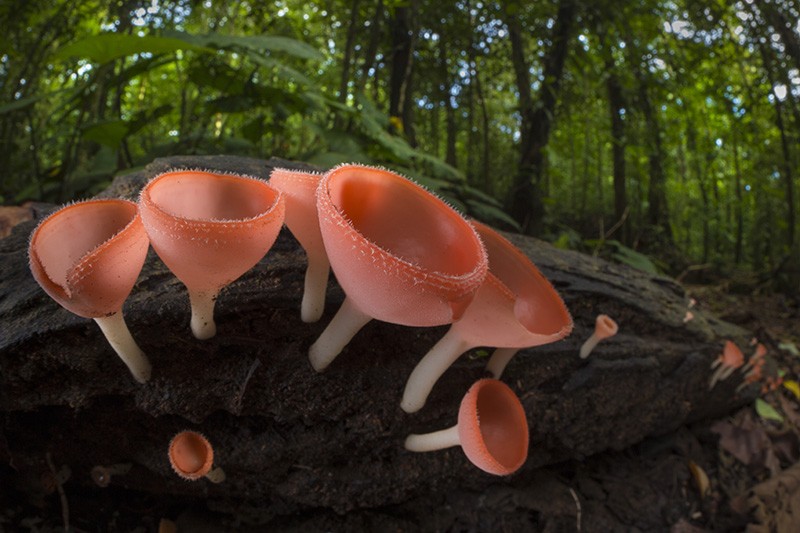Microscopic specimens discovered in the Canadian Arctic are surprisingly intricate.
This fungus in Costa Rica may ultimately have evolved from a species that emerged one billion years ago.Credit: Alex Hyde/Nature Picture Library/Science Photo Library
Minute fossils pulled from remote Arctic Canada could push back the first known appearance of fungi to about one billion years ago — more than 500 million years earlier than scientists had expected.
These ur-fungi, described on 22 May in Nature1, are microscopic and surprisingly intricate, with filament-like structures. Chemical analyses suggest that the fossils contain chitin, a compound found in fungal cell walls.
If that analysis holds up, it could reshape understanding of how fungi evolved and whether they might have facilitated the movement of plants onto land. But some researchers are not yet convinced that the finding is truly a fungus. “It looks to me as if there’s reason for believing it’s real at this point,” says Mary Berbee, a mycologist at the University of British Columbia in Vancouver, Canada. “But more data would be really useful.”
Palaeobiologist Corentin Loron at the University of Liège, Belgium, and his colleagues found the fossils while exploring a region of Arctic Canada called the Grassy Bay Formation.
The team had to travel to the study site, nestled amid the area’s dramatic cliffs, by helicopter. Because the rocks there formed without exposure to high temperatures and pressures, the fossils within them are remarkably preserved, says palaeobiologist Emmanuelle Javaux, Loron’s adviser at the University of Liège.
From there, the team painstakingly sectioned the fossils into thin sheets that could be analysed with an electron microscope. Those images revealed branched filaments ending in spheres. The filaments were divided into segments by septae, walls that are found in some modern fungi.
A fungus among us?
The fossils were discovered in billion-year-old rock, and the presence of chitin in the specimens further persuaded the researchers that they were preserved fungi that died a billion years ago. The team named the fungus Ourasphaira giraldae.
But the researchers’ interpretation of their chemical analysis troubles Sylvain Bernard, a geochemist at the Institute of Mineralogy, Physics of Materials and Cosmochemistry in Paris. The presence of many organic molecules could produce similar results, he says, and the findings from the chemical analysis also suggested the presence of molecules not typically found in chitin. “These data do not show that these microfossils originally contained chitin.”
Loron counters that the samples could have contained chitin and other organic compounds. He also points to the presence of chemical signals characteristic of chitin, and chitin-like fibres on the fossil surface. “Our results are most consistent with chitin,”” he says.
The team’s findings also match molecular studies that use the rate at which DNA changes accumulate in fungi to calculate when they first appeared, Javaux says. These ‘molecular clock’ analyses had already placed the origin of the fungi back to about one billion years. But palaeobiologist Christine Strullu-Derrien of the Natural History Museum in London says that previous molecular analyses have suggested that the only fungi living one billion years ago were simple, single-celled creatures — and did not possess the more complex, filamented structures seen in the fossils.
Nevertheless, she is hopeful that further study will confirm that the fossils contain fungi. “I would like to believe it,” she says. “That makes an important finding in the world — if it is really a fungus.”
(원문: 여기를 클릭하세요~)
